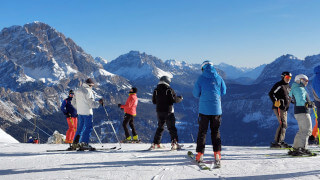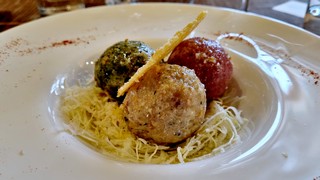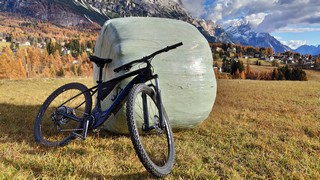Introduction
Cortina d'Ampezzo is a wonderful location any time of year, but depending on when you visit it, it offers very different experiences. The summer and winter seasons are busier, with the periods of Christmas and August being characterized by mass tourism, events, and sophistication.
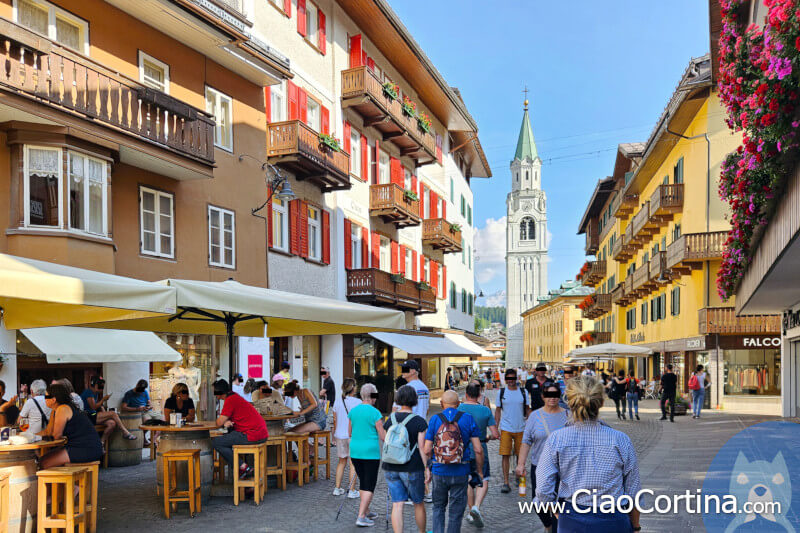
The other months are quieter, less chaotic, and more suitable for sports, relaxing, and enjoying the peace surrounded by nature. On this page, we want to give you an idea of what to expect, month by month, when you visit Cortina d'Ampezzo, in order to understand which period may be your favorite.
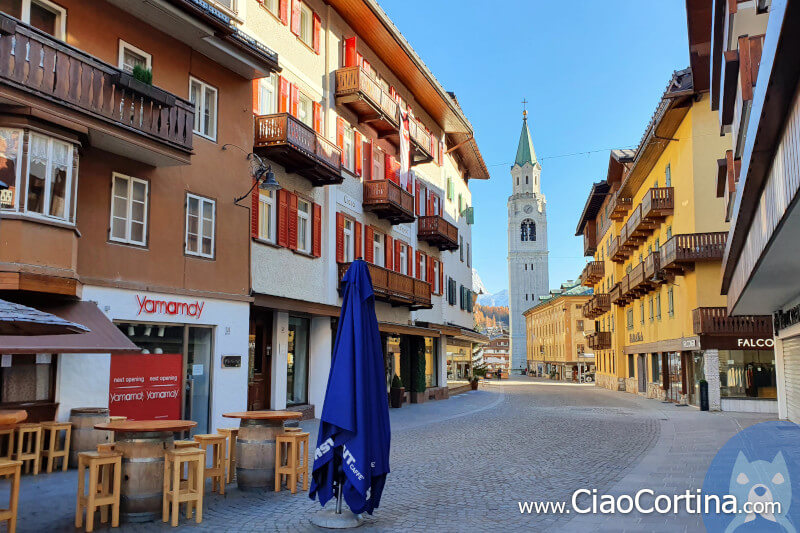
Winter
December is the month when the winter season starts. The commercial activities open, everything gets ready for the 8th of December, an Italian holiday called "Immaculate Conception," when the Fashion Weekend brings a large number of tourists to Cortina.
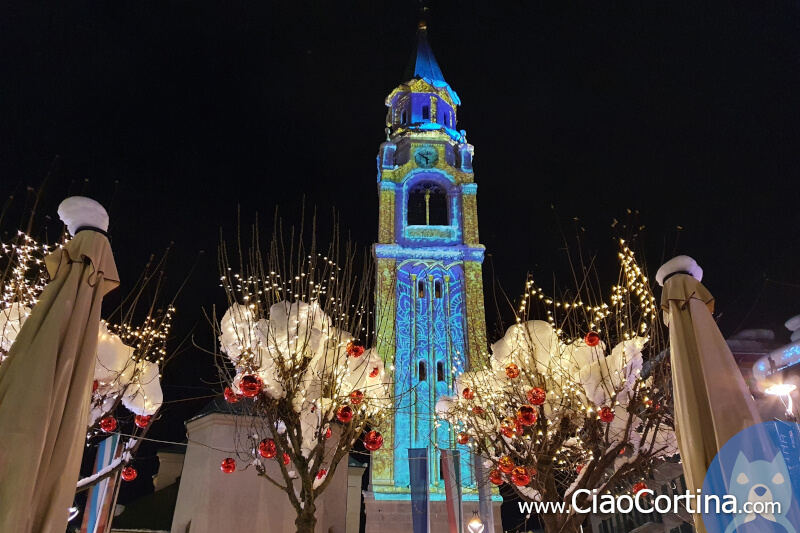
After this long weekend, the town returns almost quiet until around the 20th of December, when, little by little, it reaches the peak of the affluence, of the manifestations, and of the sophistication. The snow makes everything magical, but if it hasn't snowed, it's still possible to ski on artificially snow-covered slopes and do some hiking. If you want some ideas on what to do in the winter in Cortina, we leave you with a dedicated page below:
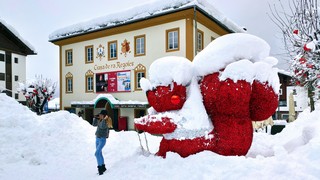
After Christmas you'll have to start to take into account the traffic, the high prices of accommodations, and the need to book in advance to find a place, both in the hotels and in the restaurants. On the other hand, if you come to Cortina between Christmas and Epiphany, you'll have the opportunity to live in sophistication and luxury, with "Corso Italia," the pedestrian area of the center, becoming a "catwalk" where you can show off your most fashionable outfits.
The peak will be on the evening of New Year's Eve where finding a free place without having booked in advance may be "mission impossible."
... December is the month when the winter season starts...
January is a bit of an odd month. It goes from the sold-out of the first few days to a more quiet second half of the month. If you want to see Cortina at the height of its splendor, assuming that you like the crowd, the days between Christmas and the Epiphany are the best, for sure. As you can guess, there are some downsides: you'll have to take into account the traffic, the queues at the ski lifts, the high prices of the hotels, and the need to book in advance to find a place for almost everything you need, from the facilities to the accommodation to the restaurants. On the other hand, it will be possible to experience the most fashionable Cortina possible, with Corso Italia full of stylish and interesting people.
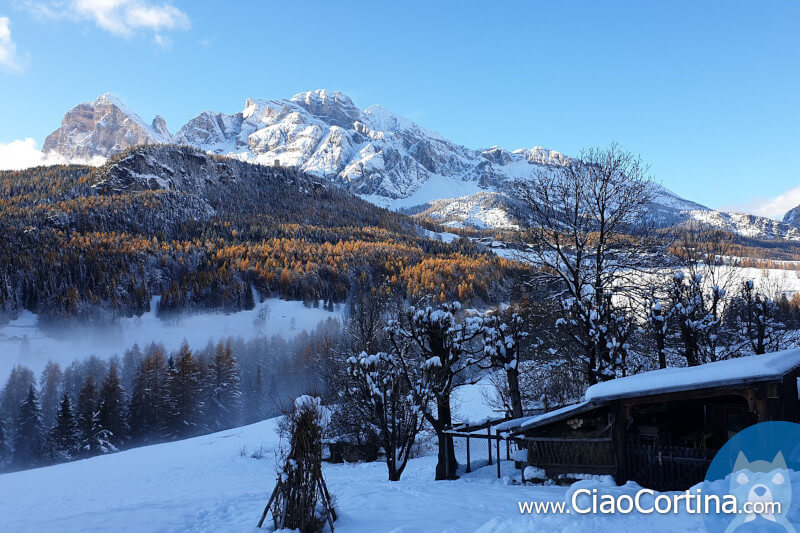
After the Epiphany, the touristic presence decreases, with some affluence among tourists, mostly on the weekends. If you want to visit the Ampezzo valley in January, bring warm clothes; the cold in winter is bitter, and the sun, which can be seen only for a few hours, does not warm too much.
February is the month where the Italians make the tradition "Ski holidays week." It's also the month of masquerade parties. Thanks to the carnival and the "Ski Week," there is a good influx of tourists without the mess of the Christmas period.
February is definitely the best month for those who love skiing and winter sports. The days start to lengthen, and the sun is shyly beginning to warm the air, but remember: the temperatures are still very low. As if that wasn't enough, statistically, February is also the month with the lowest chance of precipitation, making it ideal for a ski vacation. In this period, many sporting events take place:
- The Toblach-Cortina, the second-biggest cross-country ski marathon race in Italy, has taken place since 1977.
- The traditional "Palio dei Sestieri d'Ampezzo" is a cross country skiing race for local athletes only, where they represent the district where they live.
- The Cortina Snow Run is a run that takes place on ski slopes.
- The Women's Alpine World Ski Championships.
... February is the month of the ski week...
March is very similar to February and is also chosen by many tourists for "Ski week," since the days get longer and there are good chances to have a fairly mild climate, at least if you stay under the sun. It is a period generally characterized by ideal conditions for winter sports; there is more influx on weekends, and there's a little less confusion during the week.
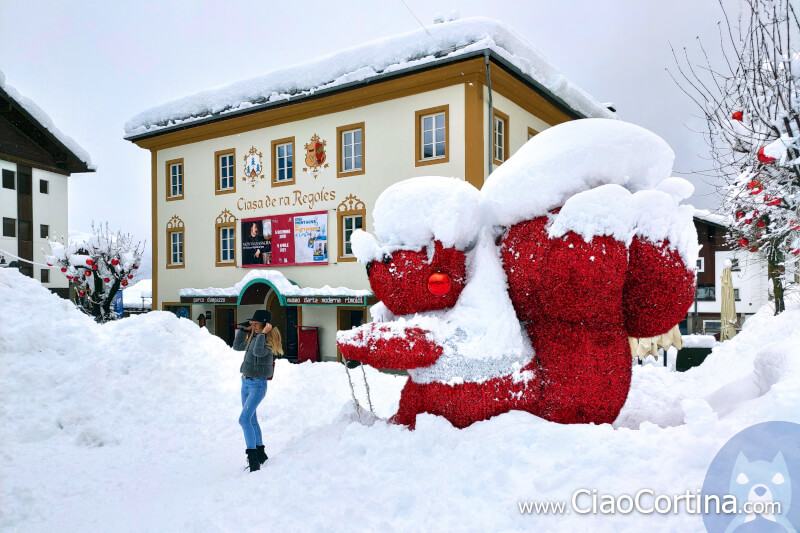
In the years where spring arrives earlier, it is possible to find the ski slopes a little too "soft" in the afternoons. In this case, we recommend limiting your skiing to the mornings and dedicating the afternoons to hiking or shopping. It has also to be said that, in the case of a low snowfall or particularly warm winter, there may be little snow at all.
If you are lucky, you'll be able to see the passage of the Winterace - Cortina d'Ampezzo, a regularity race for up to eighty historic vintage cars that crosses Cortina and other mountain passes for a total of 400 km, or 249 mi. It is amazing how some crews bravely face the weather conditions, sometimes not so friendly, especially in cars of a certain age, sometimes even convertibles.
 Help us stay ad-free with a small offer.Donate now!
Help us stay ad-free with a small offer.Donate now!
Spring
April is a month that is deeply affected by Easter. Usually, after the Easter holidays, most of the commercial activities and ski resorts begin to close, preparing for the off-season. If Easter comes at the beginning of the month, Cortina is still very popular with skiers and owners of second homes, but if it arrives towards the end of the month, many tourists would prefer to go to the sea if it's warm.
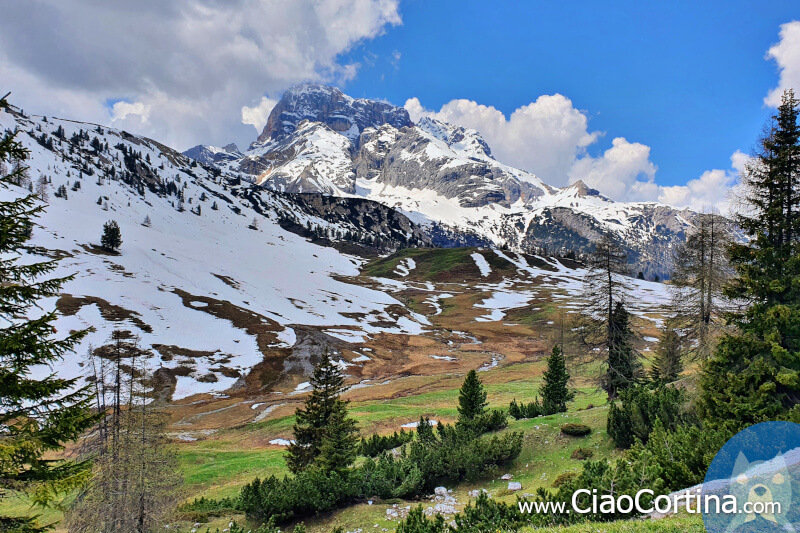
Rising temperatures could lead to some problems with the snow on the lower altitude slopes, and the high altitude slopes suffer from a lack of tourism. Generally, Mount Faloria tries to close its slopes on May 1st when possible, but all the other operators hardly get that far ahead. If you decide to visit Cortina during this period, the weather will be "a surprise." You may find spring-like temperatures, as well as waking up in the morning with thirty centimeters of fresh snow.
... the weather will be "a surprise"...
May is a very quiet month in Cortina. The ski lifts are closed, and the snow probably still makes high-altitude hiking difficult, but usually it's not enough to make any kind of ski attractive. Residents use this period to take a break and go on a holiday, probably to the sea.
Surely it is a month ideal for those seeking relaxation and solitude, with walks in the woods and bike rides in which you would meet very few people, if not nobody. On the other hand, it will be more difficult to find any accommodation facility available, and many shops will be closed for vacations. Temperatures begin to rise, but remember to always bring a jacket, because it is not so obvious that the temperature will be warm after the sunset.
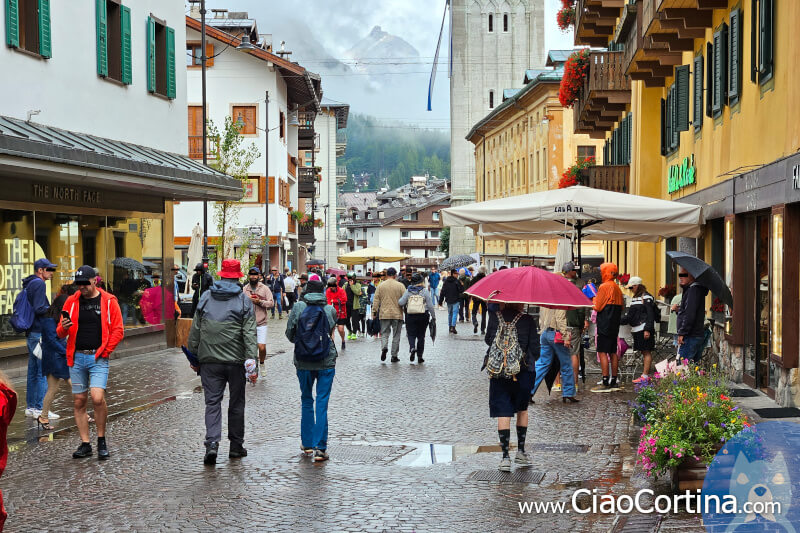
June is a very quiet month for the same reason as May: the locals move to the south, generally to the beaches, to recharge their batteries in preparation for the summer season, which starts later in the mountains. There are some events that bring a bit of liveliness to the village. These are mainly running races, or maybe mountain bike races, of which the main one is definitely the Lavaredo Ultra Trail of Cortina.
Real mountain lovers, many of them foreigners, come to Cortina to find less crowded mountain paths and more reasonable prices, thanks also to the camping sites open. If you are looking for the best time for hiking and climbing, June is definitely the ideal month.
If you like walking in the mountains, you cannot miss our article on the most beautiful hikes to do in Cortina, which you can read by clicking below:
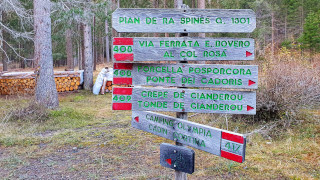
Thanks to the warmth, to the arrival of the first tourists, and to the long days, the alpine lodges begin to open, and the whole town gets ready for the arrival of the peak season. Personally, we think it is the most beautiful month to visit Cortina if you are searching for tranquility, because you can see the mountain in the best way.
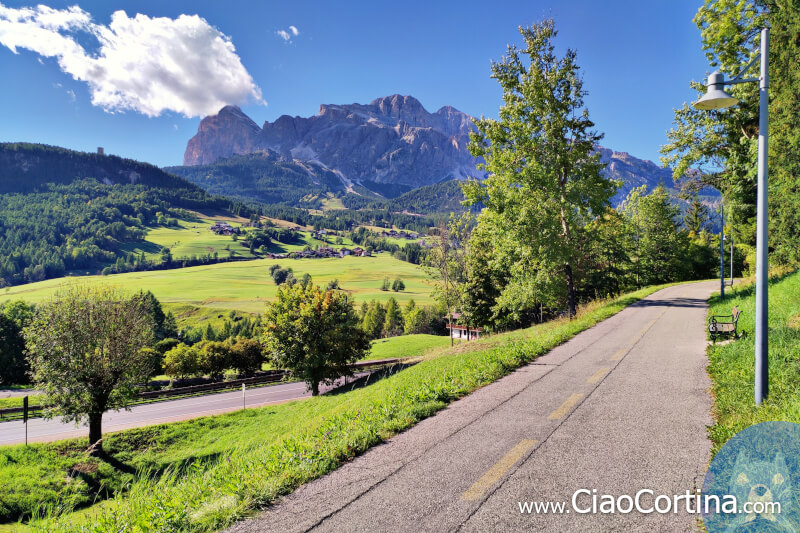
Temperatures are generally warm, although I suggest you go out in the evening bringing a light jacket; you probably won't need it, but if you do, you'll regret not having it. June, unfortunately, is also a rather rainy month, especially in the afternoons. If you'd find bad weather during your stay, I suggest you read the page on what to do in Cortina if it rains. You can find it below:
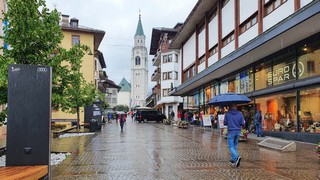
Summer
July is the month that marks the beginning of the summer season in Cortina. It's not nice to say, but it's the elderly who arrive first to escape the heat of the city and the sea.
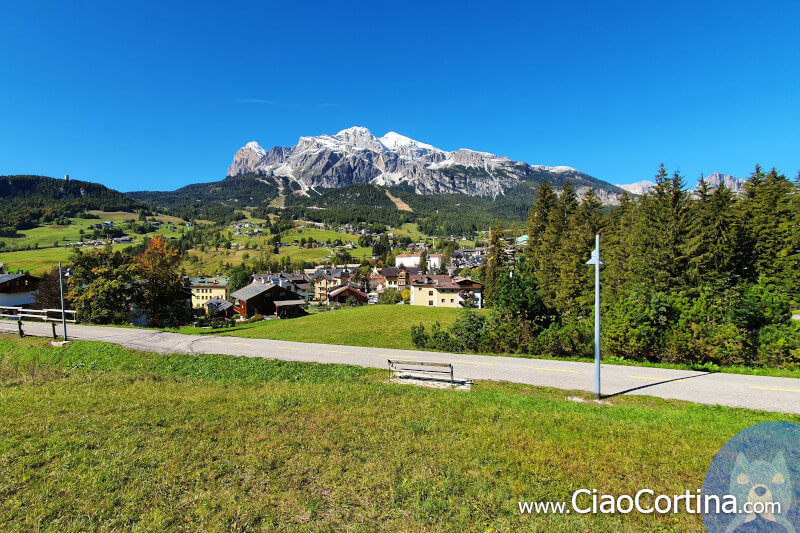
In the second part of the month, younger tourists begin to flow in greater numbers, also because, in the valley, the temperatures are, generally, really hot. The most popular summer sports are hiking, climbing, and cycling. About the latter, we wrote an article you can read below:
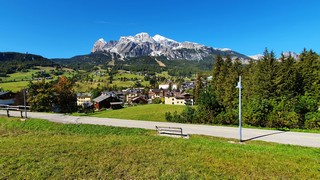
Towards the end of July, it starts to be a good idea to make reservations if you plan to go out to eat, as you may start to struggle to find a seat in the trendiest locations. The first Sunday of July, the Ampezzo Country Fair takes place, opening the season of summer events in Cortina. Temperatures start to get really summery, although thunderstorms are always a possibility.
... in July temperatures start to get really summery...
August is the month with the highest tourist inflow in the summer. Restaurants should always be booked; the accommodations are almost full, and parking the car begins to become difficult. This month is characterized by a lot of people, events, and luxury. In August, "Una Montagna di Libri," translated "A Mountain of Books," "Una Montagna di Libri," translated "A Mountain of Books," takes place, where writers tell about their books, or the amazing "Fèŝta de ra Bàndes," a marching band parade in the town center, which concludes the Ampezzo summer. We covered this in a dedicated article, which can be found below:
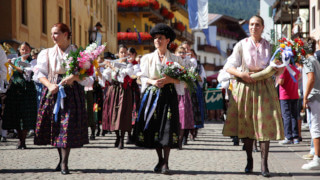
August is definitely not the right month for lovers of solitary walks in the mountains. The chances of finding hordes of tourists crowding the most popular trails are very high. If you are looking for some peace and quiet, the only solutions are to leave in the morning very early or to look for the less-traveled routes, usually the most physically strenuous ones.
Temperatures in August are warm, although towards the end of the month it's not uncommon to notice a cool off in the evenings, and you would need to use a light jacket to find the perfect temperature.
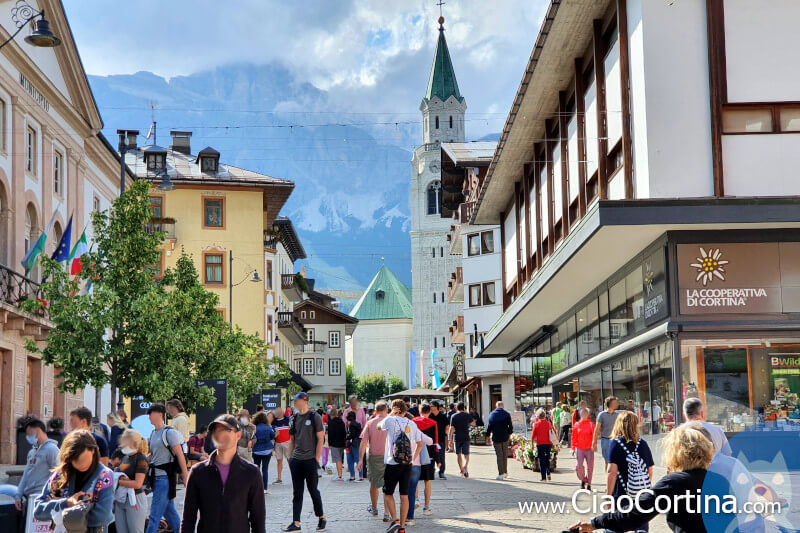
September brings a return to tranquility. As the month progresses, the number of tourists is decreasing, but usually most of the accommodation facilities are still open, at least until the reopening of the schools. As in the case of June, this is a beautiful month for mountain lovers, as it allows them to live it peacefully without the confusion of the previous months.
Towards the end of the month, generally, the Delicious Trail Dolomites take place. It is a trail-running race with some "pit stops" consisting of traditional Ampezzo dishes and snacks in all the mountain lodges involved.
The great thing is that it's not a race for only athletes. There are also many participants who don't want to make any records but just want to walk, eat, and drink a few glasses in an amazing landscape.
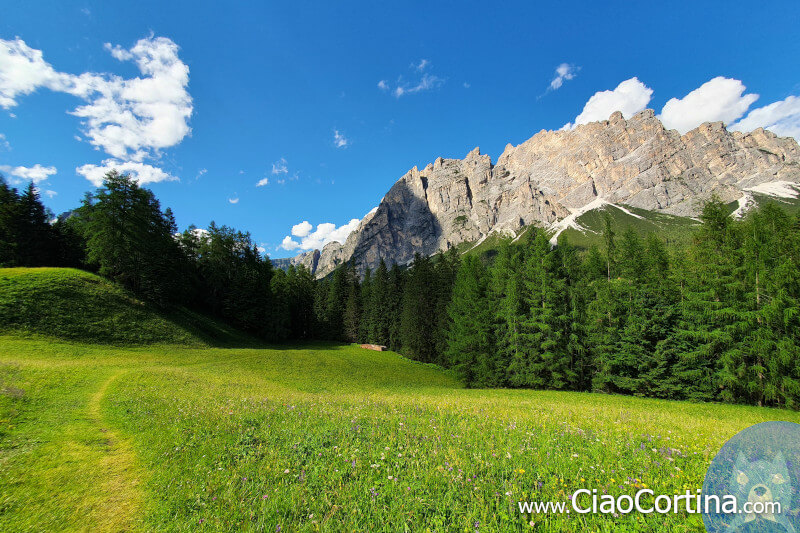
Weather-wise, the temperatures are usually quite pleasant, but it's always better to have a jacket for the evening and a sweater or sweatshirt for the late afternoon.
 Help us stay ad-free with a small offer.Donate now!
Help us stay ad-free with a small offer.Donate now!
Autumn
October is a "magical month," both because you can hope for the last warmth and because autumn brings incredible colors to Cortina. In the second part of the month, the larches turn golden, and the broad-leaved trees slowly turn red and orange. The walks in the woods are something indescribable. The Dolomite passes become enchanting, especially the Giau Pass. I guess you've already figured out that October is our favorite month, especially in the second part, when the magic of autumn begins to happen.
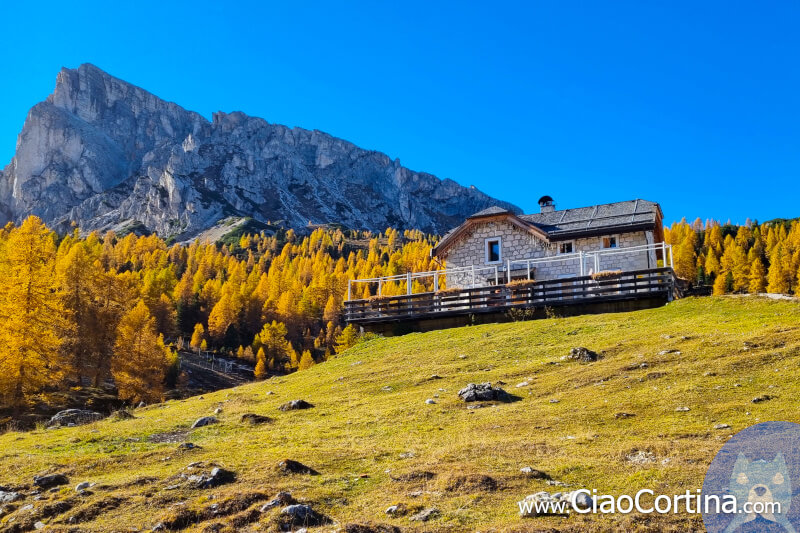
The downsides are that, in this month, many structures are closed, and temperatures begin to drop. In the morning, you'll find the first ice on car windows, and the town may be snowy, even though it's unlikely.
Dress well and be prepared to find large temperature swings between day and night. Believe me when I say that coming to Cortina in autumn to walk in a larch forest or see a mountain pass is an experience you should do at least once in your life.
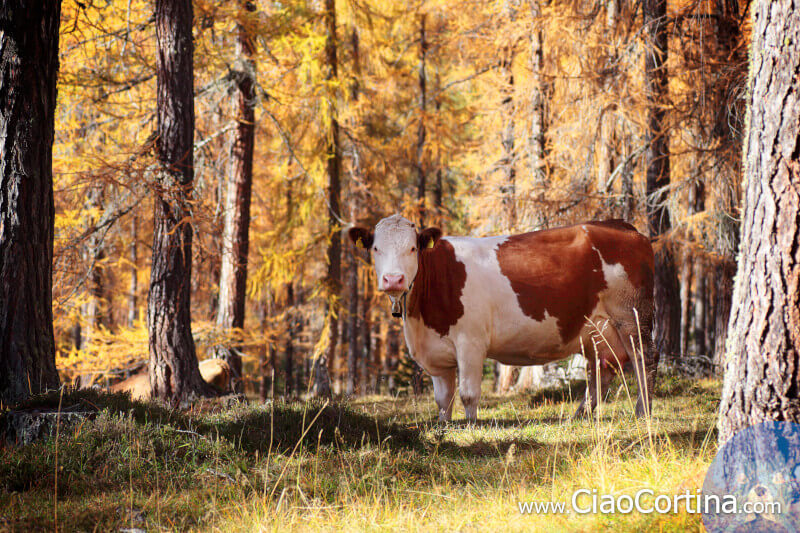
November, unfortunately, is a rather "sad" month to come to Cortina. At the beginning of the month, you can still enjoy the charm of autumn, but as the days go by, the panorama tends to become a bit desolate. Even in the event of snow, which is quite likely, the ski lifts don't open before December. It might be possible to go walking if it's November and it hasn't snowed, but the low temperatures make it less enjoyable. Snow, on the other hand, is generally neither enough nor ideal for ski tours.
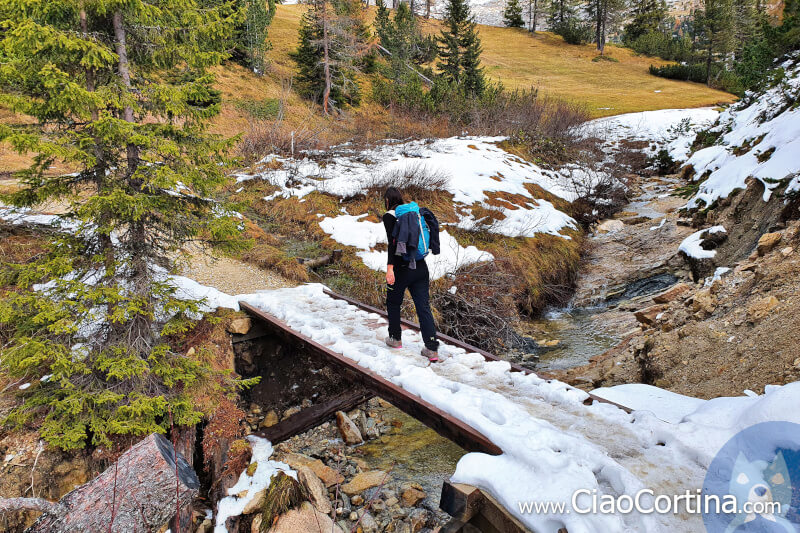
The days start to get really short. On rainy or snowy days, it's possible to find the town center completely deserted. Despite everything, some stores and bars are still open, so even if you come to Cortina in November, you'll find something to do, even if you get bored.
Having started our article with the "winter" chapter, with the month of December, we have to close this list in an alternative way, with November, the most "unhappy" month of the year to visit Cortina.
Some useful information
As you have surely already read between the lines, we always recommend making a call before going to any place or using any service. In high season, the phone call allows you to book a table, while in off-season, it allows you to make sure the place is open and accessible.
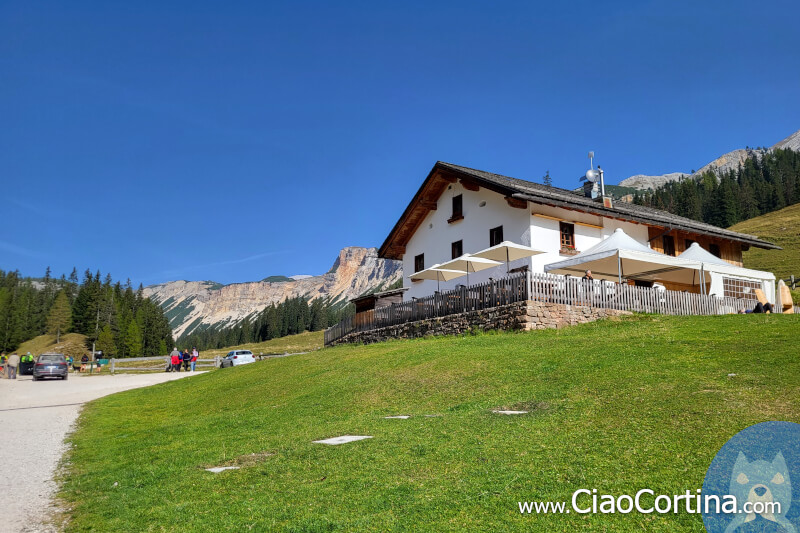
If you've noticed a nice restaurant, you should book in advance, especially during peak season, the weeks of Christmas and August. Cortina's guests are generally "relaxed," and aperitifs could get long, so the restaurants generally start to fill up after 8 p.m. or even later. If you don't have a reservation, it may be better to reach the restaurant early to maximize your chances of finding a free place.
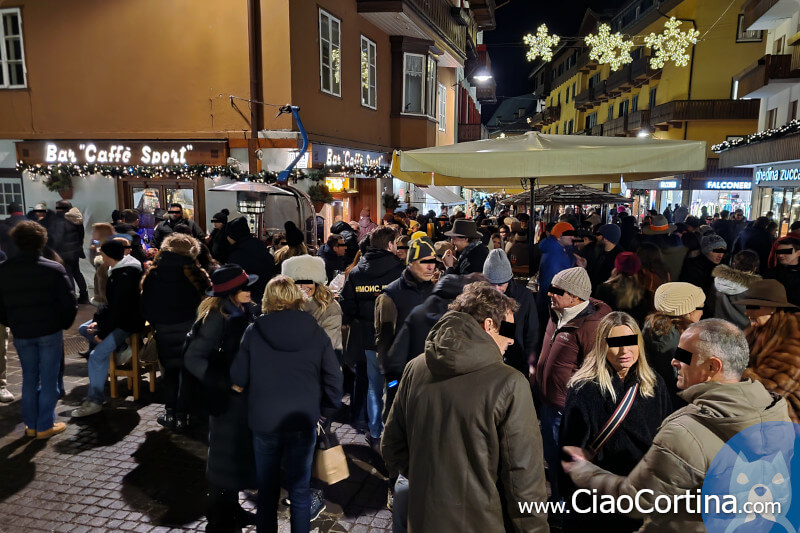
If you want to go skiing or hiking, we recommend leaving early. Parking your car at 8:30 a.m. should almost guarantee you to find a parking slot, both on the ski slopes and in the spaces reserved for hikers. Leave the late wake-up call for bad weather days, and in that case, prefer to walk instead of taking the car. One of the unsolved problems of Cortina are the parking lots, which are always too few compared to the needs of the high season, especially during peak periods.
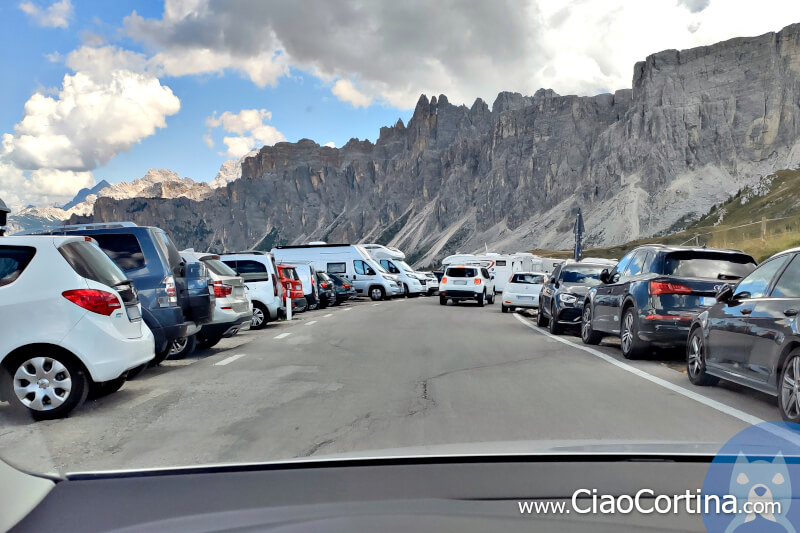
If you want to know everything you need to know about parking in Cortina, which is one of the critical points of this beautiful resort, we invite you to read our article, which you can see below.
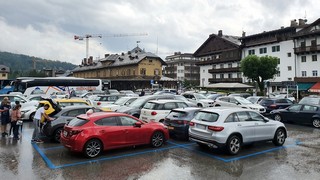
If you want to stay in a hotel during peak season, it's extremely important to book in advance. If you really can't find a place to stay in the more crowded weeks, the only option left is to try to find an alternative period for your vacation. Before surrendering, remember that there are many different types of facilities, such as bed and breakfasts, campgrounds, and last-minute deals. Spend a few hours on the Internet and call the most attractive facilities you have identified before giving up.
... during peak season, it's extremely important to book in advance...
If there is really no possibility of finding accommodation, we recommend that you identify some days that you might like in the lower season and try to come at that time. We know that it's not easy to change the days of the vacation, but there are some weeks where Cortina is really crowded. Who knows, maybe you could find the pleasure of a quieter vacation, with all the services available without exaggerated queues and confusion wherever you go.
 Help us stay ad-free with a small offer.Donate now!
Help us stay ad-free with a small offer.Donate now!
Tourist flows in Cortina
About tourist flow in Cortina d'Ampezzo, the average influx is around 200,000 people in the summer and almost 300,000 in the winter. This statistic examines the months from May to September for the summer season and from December to April for the winter season. Both houses and hotels are included in the count.
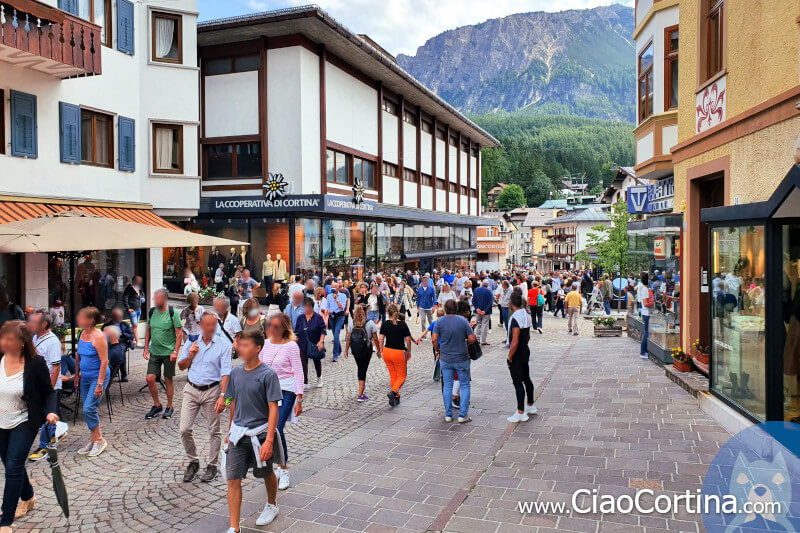
If we go to consider presences rather than overnight stays, the numbers are close to one million annual admissions. An analysis of the nationality of the tourists says that most are from Italy, with more than 50% of the total number of visitors.
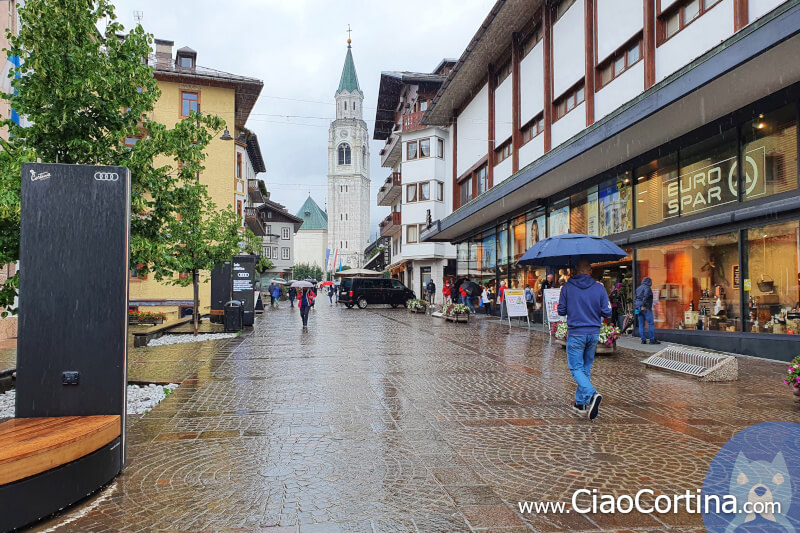
The tourists from foreign countries are mainly from Germany, the United States, theUnited Kingdom, and France. The number of arrivals from foreign countries has been steadily increasing since 2005; foreign presences are concentrated in the lower season months, while August and December are clearly dominated by Italian tourism.
Conclusion
We hope you liked this page on the monthly touristic flow in Cortina d'ampezzo. Before saying goodbye, we would suggest you read our home page, with all the articles we wrote about Cortina d'Ampezzo.
If you want to thank us you can read the page Support us. If you only want to suggest a change, propose something or just say hello, in the section contacts and info, you'll find all the ways to reach us.
